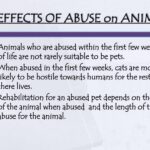Animal cruelty, a pervasive blight on our civilization, often lurks in the shadows, hidden in the recesses of society where it thrives unchecked. While countless cases of suffering inflicted upon animals make headlines, there are chronicles of extreme anguish that compel us to confront the darkest aspects of human behavior toward our fellow creatures. Among these, few incidents strike a more resonant chord than the harrowing episode of a dog shot forty times with a pellet gun.
At first glance, this may appear as an isolated incident, an outlier in a world fraught with innumerable instances of neglect and maltreatment. Yet, it encapsulates a broader, unsettling reality about the sheer capacity for cruelty that exists among humans. The sheer brutality is unimaginable—imposing such suffering on a sentient being for no discernible reason but to gratify a perverse desire for violence. Such acts leave a profound mark not only on the victims but also on the societal psyche at large, challenging the very fabric of our moral and ethical frameworks.
To understand the implications of this particular case, one must delve into the details surrounding it. The dog, a vulnerable and innocent being, faced an excruciating ordeal, suffering not only physical pain but also significant psychological trauma. Each pellet that struck its frail body represented a moment of unimaginable fear and betrayal. The once-trusting creature was subjected to a barrage of violence, an act so heinous it forces us to reflect on the sociopathic tendencies that can emerge within our species.
This case ignites a crucial discussion regarding the motivations behind such cruelty. What drives an individual to inflict such egregious harm? In many cases, a combination of socio-economic factors, a lack of education, and even pathological tendencies can converge, creating a breeding ground for such deplorable acts. It forces us to ask: are we, as a society, doing enough to address the root causes of animal cruelty?
Moreover, the aftermath of such egregious actions raises questions about justice and accountability. In some instances, the perpetrators may be apprehended and prosecuted. Yet, these legal resolutions often feel inadequate when placed against the backdrop of the suffering endured by innocent animals. Can we truly call ourselves a civilized society when our systems frequently fail to protect the most vulnerable among us?
What exacerbates the tragedy of this case— as with many instances of animal cruelty— is the public’s response. Often, the initial outrage quickly wanes, overshadowed by the myriad of distractions in day-to-day life. The fiery passion that engulfs us in the heat of revelation dissipates like morning fog, leaving behind only the chill of indifference. In an age where social media dominates discourse, it is imperative to harness this attention generated by such cases to foster a lasting change and provoke a seismic shift in societal attitudes toward animal welfare.
Moreover, animal cruelty cases, such as the one we are discussing, engage our moral compass. They compel us to reconsider our definitions of compassion and justice. How does one reconcile the seemingly insatiable thirst for violence found in some individuals, especially when its targets are creatures incapable of voice or defense? The horror lies not only in the act itself but also in the apathy it often elicits. We must challenge ourselves to evolve beyond mere spectators of these atrocities; we have a collective responsibility to advocate for change.
The media plays an undeniably pivotal role in shaping narratives around animal cruelty. Sensationalized headlines often capture public attention, but they can do more than just shock; they can act as catalysts for change. The heartbreaking image of a dog riddled with pellets serves not only as a call to action but also as a poignant reminder of the fragility of life. It prompts us to reconsider the ways in which we view and relate to animals; they are not mere property but sentient beings deserving of empathy and protection.
Our commitment to combating animal cruelty necessitates a multi-faceted approach. It begins with education—teaching our communities about the core principles of compassion and respect toward all living beings. By fostering a narrative that promotes awareness and responsibility, we cultivate a culture where cruelty is neither tolerated nor ignored.
Moreover, advocacy on behalf of oppressed animals demands action. This encompasses lobbying for stricter animal welfare laws, supporting organizations that combat cruelty, and engaging in community outreach programs. Initiatives that encourage responsible pet ownership and humane treatment can create lasting change, gradually reshaping societal norms and expectations surrounding animal care.
Finally, we must confront the uncomfortable truth that cases of extreme animal cruelty reflect deeper issues within our society. They are symptomatic of a culture that often prioritizes personal gratification over empathetic connection. If we are to erode the roots of such cruelty, we must foster a more compassionate worldview—one that understands the intrinsic value of all life.
As we reflect upon the grim reality of the case of the dog shot forty times, let it serve as a poignant reminder, not merely of the horrors that exist but of our capacity to instigate change. In every act of cruelty, there lies an opportunity to sow the seeds of compassion, ensuring that the suffering of one can spark a revolution in collective consciousness. It is time to unite in the fight against animal cruelty, to shed light on the darkness, and to proclaim that, as sentient beings, all creatures deserve a life free from violence and fear.







